#Myrica cerifera
Explore tagged Tumblr posts
Text
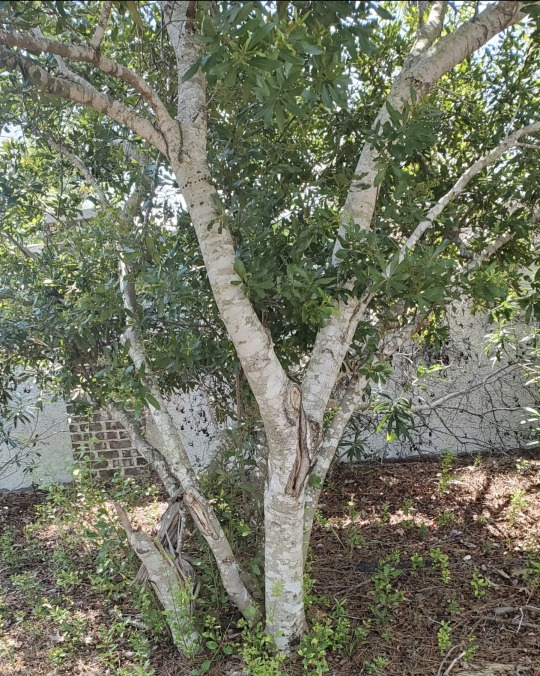
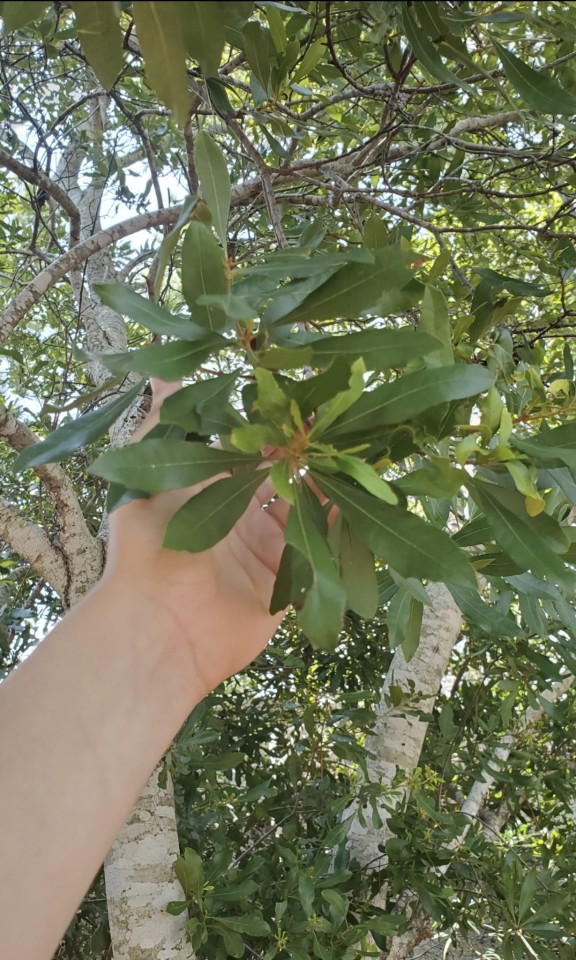
8/12/2023
1 note
·
View note
Text
The Charms of Bayberry Wax
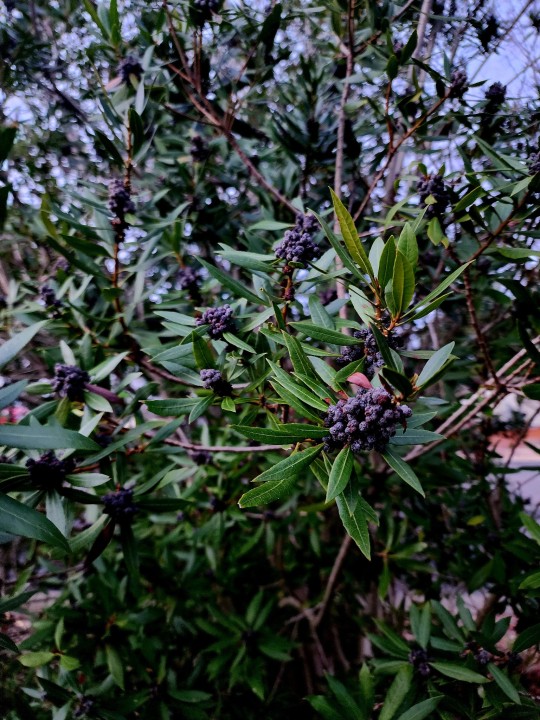
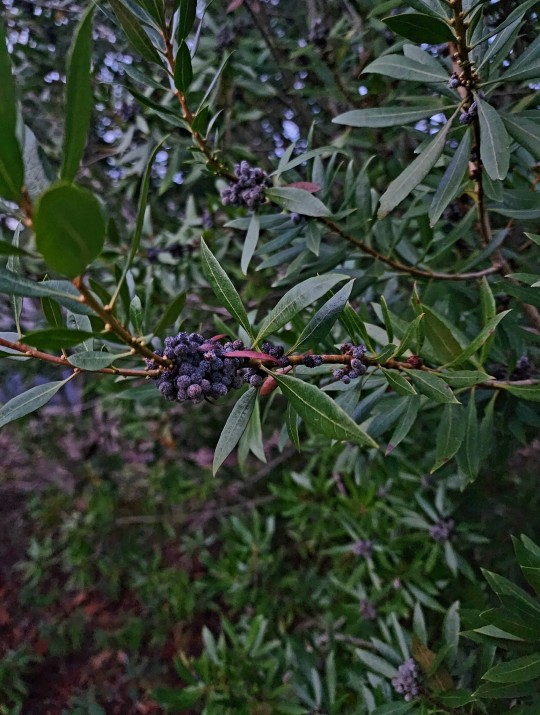

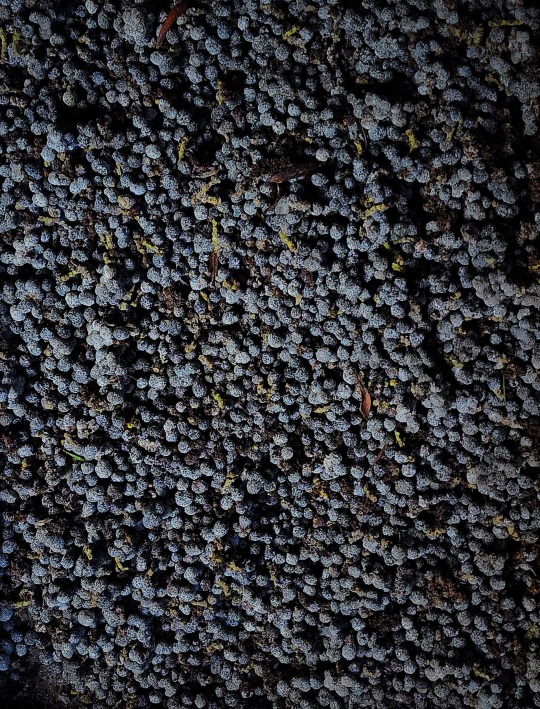
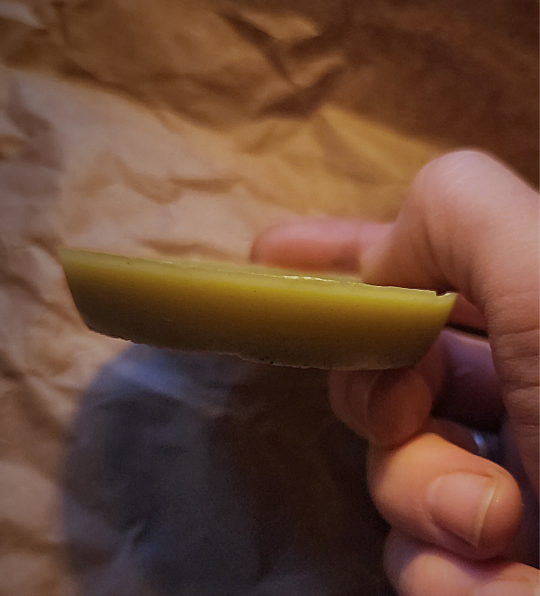
Earlier this year, I went about rendering wax from Bayberries for the first time in my life. The experience was a bit painstaking, but I am grateful for what I learned in the process, and for the wax I managed to get from it in the end. I look forward to using it in special rites and celebrations.
For any curious or confused about what I'm mentioning, the Myrica cerifera plant—commonly known as the Bayberry bush or Wax Myrtle—posesses berries that, when properly rendered, can produce a greenish wax. It's not all too different from beeswax, though it's more brittle, it burns differently, and it has a mild and vaguely herbal sent, kind of similar to olive oil. This wax can be used to make things like candles, and it posesses strong virtues relating to both fortune and wellbeing.
42 notes
·
View notes
Text
How to Create a Low-Maintenance Garden in West Palm Beach
West Palm Beach, with its tropical climate, sandy soil, and year-round sunshine, provides a unique environment for gardening enthusiasts. However, the warm temperatures and periodic heavy rainfall can present challenges to maintaining a lush, thriving garden. The good news is that with the right strategies, you can create a low-maintenance garden that not only looks beautiful but also thrives with minimal effort. This guide will walk you through the essential steps to designing and maintaining a garden that suits the West Palm Beach climate, allowing you to enjoy your outdoor space without the constant upkeep.
Understanding the Climate and Soil of West Palm Beach
Before diving into plant choices and design tips, it's important to understand the climatic and soil conditions in West Palm Beach:
Climate: This region experiences a tropical rainforest climate with hot, humid summers and mild, dry winters. The rainy season usually occurs from May to October, with afternoon showers being quite common.
Soil: The soil in West Palm Beach is typically sandy, which drains quickly but often lacks essential nutrients.
Understanding these factors will help you choose plants that are naturally suited to the environment, minimizing the need for constant watering, fertilizing, and maintenance.
Choosing the Right Plants for a Low-Maintenance Garden
Native Plants: The Key to a Sustainable Garden
One of the best ways to ensure a low-maintenance garden is by choosing native plants. Native species are adapted to the local climate, soil, and pests, meaning they require less water, fertilizer, and pest control. Some ideal native plants for West Palm Beach include:
Saw Palmetto (Serenoa repens): A hardy shrub that adds texture and thrives in sandy soil.
Coontie (Zamia integrifolia): A drought-tolerant plant that provides a lush, tropical look.
Firebush (Hamelia patens): Known for its bright red-orange flowers that attract pollinators like hummingbirds and butterflies.
Southern Wax Myrtle (Myrica cerifera): A versatile shrub that can be shaped as a hedge or left to grow naturally.
Tip: Group native plants together to create a cohesive look that mimics natural Florida landscapes.
Drought-Resistant Choices
West Palm Beach’s tropical weather means periods of heavy rain followed by dry spells. Choosing drought-tolerant plants can help reduce the need for irrigation. Some popular options include:
Agave: Known for its striking rosettes and low water needs.
Desert Rose (Adenium obesum): Produces beautiful pink or red flowers and thrives in hot conditions.
Lantana: A flowering plant that adds vibrant color and attracts butterflies, all while being resistant to drought.
Low-Growing Ground Covers
To avoid constant weeding and lawn mowing, consider planting ground covers. Ground covers spread quickly, filling spaces and preventing weed growth while also retaining moisture. Excellent options include:
Asiatic Jasmine (Trachelospermum asiaticum): A hardy, dense ground cover that requires minimal care.
Beach Sunflower (Helianthus debilis): A native plant that produces cheerful, daisy-like flowers and thrives in sandy soils.
Designing Your Low-Maintenance Garden Layout
Creating Zones
Segmenting your garden into zones can make maintenance easier and add visual interest. Think of creating sections for different purposes:
Low-maintenance flower beds: Use native flowering plants and ground covers.
Shaded relaxation areas: Plant trees like Live Oak or Cabbage Palmetto to create natural shade.
Rock or gravel gardens: These require minimal watering and upkeep and can be adorned with drought-tolerant succulents or cacti.
Mulching for Moisture Retention
Adding a thick layer of mulch around your plants can do wonders for retaining moisture, regulating soil temperature, and suppressing weeds. Organic mulch options, such as pine bark or shredded hardwood, decompose over time, adding nutrients to the soil.
Tip: Reapply mulch once or twice a year to keep it effective.
Drip Irrigation Systems
Consider installing a drip irrigation system instead of traditional sprinklers. Drip systems deliver water directly to the base of the plants, reducing water waste and ensuring that roots get the moisture they need without oversaturating the leaves.
Benefits:
Reduces water usage by up to 50%.
Prevents the spread of fungal diseases by keeping foliage dry.
Can be set on a timer for hands-off watering.
Low-Maintenance Hardscaping Ideas
Hardscaping can add structure and style to your garden while cutting down on maintenance time. Here are some elements to consider:
Paved Pathways: Use stone, brick, or permeable pavers to create walkways that require no upkeep.
Rock Gardens: Fill empty spaces with decorative stones or gravel to prevent weeds and add a modern touch.
Water Features: Install a small, self-contained water fountain or birdbath. These features attract wildlife, add a calming ambiance, and don’t require much maintenance.
Tip: Choose weather-resistant materials that can withstand the West Palm Beach climate without needing frequent repairs or replacement.
Smart Gardening Practices for Easy Maintenance
Soil Amendment for Optimal Growth
West Palm Beach’s sandy soil can be improved with organic matter like compost or peat moss. Amending the soil helps it retain moisture and provides nutrients that plants need to thrive, reducing the frequency of watering and fertilization.
Pruning and Trimming
Low-maintenance gardens still require occasional pruning to keep plants healthy and prevent overgrowth. Opt for plants that maintain their shape naturally, and schedule trimming once or twice a year.
Seasonal Checks
Conduct a quick seasonal check to ensure your garden is in good condition. Remove dead plants, check for pests, and add fresh mulch if needed. This minimal seasonal upkeep will keep your garden looking its best year-round.
Pest and Disease Management
Integrated Pest Management (IPM)
IPM involves using natural and non-toxic methods to control pests. By choosing pest-resistant plants and encouraging natural predators like ladybugs and praying mantises, you can reduce the need for chemical pesticides.
Companion Planting
Companion planting is a strategic way to keep pests at bay while promoting plant health. For example:
Marigolds: Plant marigolds around the edges of your garden to repel nematodes and aphids.
Basil: Grow basil near tomatoes to ward off whiteflies and mosquitoes.
Benefits of a Low-Maintenance Garden in West Palm Beach
Water Conservation
A garden that requires minimal watering is especially beneficial in areas with water restrictions or during dry seasons. By selecting drought-resistant plants and using mulching and drip irrigation, you can significantly reduce your water usage.
Reduced Workload
A low-maintenance garden allows you to spend more time enjoying your outdoor space and less time on chores. The strategic use of native plants, ground covers, and mulching creates a sustainable garden that largely takes care of itself.
Supporting Local Wildlife
Choosing native plants not only benefits your garden but also supports the local ecosystem by attracting pollinators such as bees and butterflies. This creates a balanced, thriving garden that contributes to the overall health of your environment.
Common Mistakes to Avoid
Overwatering
One of the most common mistakes in gardening is overwatering, which can lead to root rot and attract pests. Stick to your drip irrigation system schedule and avoid watering during the rainy season.
Ignoring Soil Health
Many gardeners overlook the importance of soil quality. Regularly test your soil’s pH levels and nutrient content to ensure it remains conducive to plant growth.
Planting Non-Native Species
Non-native plants may struggle in West Palm Beach’s climate and require more water and care than native species. Avoid high-maintenance plants that aren’t suited for the local environment, as they will increase the time and resources needed to keep them alive.
Creating a Plan for Your Low-Maintenance Garden
Sketch Your Layout
Before you start planting, draw a basic layout of your garden. Identify areas with full sun, partial shade, and full shade, and select plants accordingly.
Choose Your Plants Strategically
Opt for a mix of perennials and low-maintenance shrubs to create a dynamic garden that changes with the seasons. Incorporate flowering plants, grasses, and ground covers to provide texture and visual interest without the need for frequent replanting.
Set Up Your Irrigation and Mulching
Install your drip irrigation system and add mulch around plants. Ensure the mulch is at least 2-3 inches thick for maximum water retention.
Plant and Enjoy
With your plan in place, begin planting according to your design. Once your garden is established, enjoy the benefits of a space that requires minimal maintenance while providing beauty and relaxation year-round.
Final Thoughts
Creating a low-maintenance garden in West Palm Beach can be a rewarding experience that saves time, conserves water, and supports local wildlife. By choosing native and drought-tolerant plants, designing your garden layout thoughtfully, and implementing smart gardening practices, you can create an outdoor space that thrives with minimal effort. Whether you’re a seasoned gardener or just starting, these steps can help you design a garden that enhances your home and makes the most of the tropical environment.
Take these tips to heart and transform your yard into a lush, sustainable haven that’s easy to care for and beautiful to behold.
0 notes
Text



The Southern Wax Myrtle (Myrica cerifera) still has some ripening berries. (Southern Bayberry, Tallow Shrub, etc.)
#nature#my photography#wax myrtle#nature photography#bayberry#backyard nature#native plants#berries#woodlot
0 notes
Text
Unveiling Authenticity: Genuine Bayberry Wax Explained
Genuine bayberry wax holds a unique place among natural waxes, prized for its rarity, distinctive aroma, and traditional uses in candle making and cosmetics. This comprehensive guide aims to uncover the authenticity and qualities of genuine bayberry wax, exploring its origins, extraction process, uses, benefits, and considerations for consumers interested in sustainable and natural products.

Origins of Genuine Bayberry Wax
Genuine bayberry wax, also known as Myrica wax or Myrtle wax, is derived from the berries of the bayberry shrub (Myrica cerifera). Native to North America, particularly along the Atlantic coast, bayberry shrubs thrive in sandy, well-drained soils and are known for their aromatic foliage and waxy berries. Historically, Native American tribes and early settlers harvested bayberries to extract wax for candles, medicinal purposes, and as a natural sealant.
Extraction Process
The extraction of genuine bayberry wax is a labor-intensive process that requires meticulous care to preserve its purity and aroma:
Harvesting: Bayberries are harvested in late autumn after they ripen to a bluish-gray color, indicating they are ready for wax extraction.
Boiling and Skimming: The harvested bayberries are boiled or heated to release the wax, which floats to the surface of the boiling water. Skimming tools are used to collect the floating wax, which solidifies upon cooling.
Rendering: Once skimmed from the water, the collected wax undergoes further processing to remove impurities and excess moisture, ensuring the final product is clean and pure.
Purification: The purified wax is often filtered or strained to achieve a smooth texture and enhance its aesthetic and functional qualities.
Pouring and Molding: Finally, the refined bayberry wax can be poured into molds to create candles or incorporated into cosmetic formulations, where it retains its natural fragrance and beneficial properties.
Qualities and Characteristics
Genuine bayberry wax is renowned for its distinct qualities and characteristics:
Aroma: It exudes a natural, mild, and pleasant aroma reminiscent of fresh bayberries, adding a subtle fragrance to candles and skincare products.
Color: The wax ranges in color from creamy white to pale yellow, depending on the purity and processing methods used.
Texture: Bayberry wax has a smooth and slightly brittle texture, making it easy to work with for candle making and cosmetic applications.
Burn Quality: When used in candles, bayberry wax burns cleanly and evenly, emitting a warm glow and releasing its natural fragrance into the air.
Uses of Genuine Bayberry Wax
Genuine bayberry wax serves various practical and decorative purposes:
Candle Making: Traditionally used for centuries in candle making, bayberry wax produces elegant, dripless candles with a distinctive aroma that is highly valued during the holiday season and special occasions.
Cosmetics: Due to its emollient and protective properties, bayberry wax is incorporated into natural skincare products such as balms, lotions, and lip balms to provide moisture, nourishment, and a smooth texture without clogging pores.
Polishes and Sealants: In historical contexts, bayberry wax was utilized as a natural polish for wood furniture and as a sealant for preserving documents and other valuable materials.
Benefits of Genuine Bayberry Wax
Choosing genuine bayberry wax offers several benefits:
Natural and Sustainable: Bayberry wax is a renewable resource derived from natural plant materials, making it eco-friendly and sustainable compared to petroleum-based waxes.
Aromatic Properties: Its natural fragrance enhances the ambiance of candles and contributes to the sensory experience of skincare products.
Skin Benefits: In skincare formulations, bayberry wax provides moisturizing, protective, and soothing properties suitable for sensitive skin types.
Cultural and Historical Significance: Bayberry wax carries cultural significance as a traditional ingredient in American colonial history and continues to be cherished for its nostalgic and aesthetic appeal.
Considerations for Consumers
When considering genuine bayberry wax, consumers should keep the following considerations in mind:
Authenticity: Ensure that the bayberry wax product is sourced from reputable suppliers who adhere to ethical harvesting practices and maintain product quality standards.
Purity: Look for products that specify purity levels and avoid additives or synthetic substitutes that may diminish the wax's natural qualities.
Usage Instructions: Follow recommended guidelines for candle making or skincare formulations to achieve optimal results and preserve the integrity of bayberry wax.
Conclusion
In conclusion, genuine bayberry wax stands out as a natural and authentic ingredient valued for its unique aroma, historical significance, and versatile applications in candle making, cosmetics, and beyond. From its labor-intensive extraction process to its aromatic qualities and sustainable benefits, bayberry wax continues to captivate consumers seeking natural alternatives with a touch of tradition. By understanding the essence of purity behind genuine bayberry wax and making informed choices, consumers can appreciate its cultural heritage, environmental sustainability, and contributions to both practical and decorative uses in everyday life. Embrace the authenticity and versatility of genuine bayberry wax to enrich your home, skincare routine, and appreciation for natural products that harmonize with nature's gifts.
0 notes
Text
hello again. flos flowers.

these are all the flowers named off in the song. as an actual song cover ik it’d probably be like the mmj ver where it alternates between miku and the group but i have thoughts on the flower language stuff sooo. yeag here they are
daphne: only thing i can find is immortality. assigning it to vs. both cause idk who else to give i’d give it to but also bc i hc the virtual singers/sekai have always been there. its like a fate kind of thing. and i rlly love the idea of the vs having been there since the characters were young (and ive seen really cute silly fanart of baby tsukasa and wxs miku and kaito and i love the idea)
ficus: abundance and peace. unsure abt this but im going with emu. vibes.
iris: faith, hope, admiration, royalty, wisdom, courage/valor - tsukasa. i dont have much to add this is just tsukasa to me. his persistent faith and hope and everything.
maackia: longing, giving it to nene for her longing to do theater and also like. longing to close that distance between her and rui. yk. this could also go to rui though.
lythrum: Forgiveness. - RUI but this could just as easily go to nene tbh. ruinene and their endless guilt godddd. they both want forgiveness yet they’ve both already forgiven the other
myrica: i can only find meanings for the name, which is joyousness, shrewdness and forgiveness and if i go with that i’d give it emu i think. joyousness just. in general. and the forgiveness, she gives others (like the past workers who left and stuff) BUT from what i can find the plant itself is a tree/shrub thing, and from the wiki page for it it says it “It is adaptable to many habitats, growing naturally in wetlands, near rivers and streams, sand dunes, fields, hillsides, pine barrens, and in both coniferous and mixed-broadleaf forests. M. cerifera can weather coastal storms, long droughts, and tropical high temperatures.” its resilient and adaptable, it can grow in a lot of places including really harsh environments. hw. not specifically hw though just, wxs in general. i like seeing swap units cause i like to see these guys grow in whatever they do. yk.
sabia: beauty and grace - i will be very honest. idk for this one.
thymus: courage, strength, power, and sacrifice, and this is just from memory so dont come for me if i’m wrong but its also used to keep away negative energy. so i’m shoving it tsukasa’s way
ribes: renewal and healing - this is just hw in general this can go to anyone
abelia:grace and elegance, personal growth - idk man. i could go with tsukasa again? but i’ve already given him a bunch. my brain is going with nene instead but i can’t quite explain why though.
sedum:peace, perseverance, and calmness. it grows best on high, mountainous rocks with cool weather though, so i’m giving it to rui. theres something there. some kind of connection.
felicia: symbolizes happiness, purity and innocence. - emu.
ochna: good luck, good health, happiness, purity, nobleness, strength, resilience - i think it’d be neat to give to rui to contrast how he sees himself. like the good luck/purity/noble descriptions in particular. idk.
lychnis/ rose campion what i can find for the flower in general is femininity and allure and as symbol of nobility BUT the white campion in particular is one i want to add here cause from the website i can find with it it says:
White Campion is known as the 'Grave Flower' or 'Flower of the Dead'. Its propensity to grow in graveyards lends it an eerie charm, making it a nighttime sentinel for the departed. Yet, its nocturnal fragrance is a siren call to moths, proving that even in death, life thrives.
and i think it fits hw’s vibe really well. thats all :3
hello. hollow wonderland flos post.

im not elaborating on most of these ngl. like this one. i dont think i need to. and i also screenshotted the entire song im not doing all that but know im going a little insane over here



“the stars that shined in the sky when we were all alone scattered long ago” emu and her wonder stage and her dream that kept her going and tsukasa post the “you will never be a star thing” and his dream of stardom that kept him going. yk.
idk how to explain the ruikasa/emunene lines. theres a thought in my head but i can’t explain it rn.
“you clever as always, are still dreaming, and you watered the flowers as if you just realized” virtual singer + kasa line i feel its more like. virtual singer talking abt tsukasa though. like despite the setback during main story after he remembers his own feelings and stuff he like. immediately jumps to moving forward. like. to continue pursuing his dream with his new realization (and new friends <3)
ruinene line. something abt the distance they have between them.
the tsukasa bit ending with emukasa is just to mirror the first instance of that section but also the entire section works both ways i think.
emu line emu trying to keep positive even in her fruitless day
ruinene gets nightmares i think but also. something abt being defeated by their dreams and like. their entire deal with the past theater group. and theater having been their dream idk how to explain well enough i have a headache rn ngl but i hope this makes sense
“in the end we even let go of our promises” emu and her promise to her grandpa and tsukasa and him forgetting why he wanted to be a star
and im missing the flower lines. im doing another post on those bits cause i wanna ramble
7 notes
·
View notes
Text
Ghost Prevention Spell (1)
Immediately following a death, brew substantial quantities of bayberry (Myrica cerifera) tea, in order to follow a Seminole recommendation to prevent ghosts.
Family and friends of the deceased should drink this tea, as well as bathing their heads and arms with it for three days following the death.
(from The Element Encyclopedia of 5,000 Spells by Judika Illes)
11 notes
·
View notes
Text
Herb Correspondents Master Lists Part 1. (A-D)
Hello this is the start to a series i will be doing. i really hope you enjoy!
Acacia (Acacia Penninelvis)
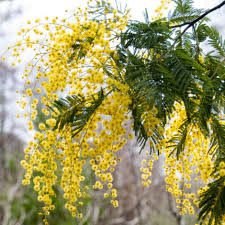
Energy : Masculine Planet : Sun Element : Air Symbol : The Afterlife
Gods : Osiris, Astarte, Ra and Diana
Uses
Common Ingredient in protection spells.
Can help enhance psychic powers.
To make a great mediation incense combine with sandalwood.
Burn the leaves on charcoal to increase personal power.
African Violet (Saintpaulia Ionantha)
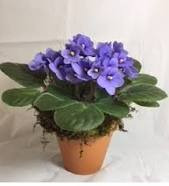
DO NOT CONSUME!
Energy : Feminine Planet : Venus Element : Water
Uses
Can be used in protection rituals.
Good for enhancing spirituality.
Agrimony (Agrimonia Eupatoria)
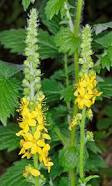
DO NOT CONSUME!
Energy : Masculine Planet : Jupiter Element : Air
Star Sign : Cancer
Uses
Use in spells about exploring true feelings.
Protection spells.
Useful in building a psychic shield.
Reducing negative influence.
Banishing negative influence.
Reverse and rebound hexes.
Enhances healing spells.
Helps sleeping.
Spells/Rituals
Sleep Spell = “If it be leyd under mann’s heed,
He shal sleepyn as he were deed;
He shal never drede ne wakyn
Till fro under his heed it be takyn.”
Alder (Alnus Glutinosa)
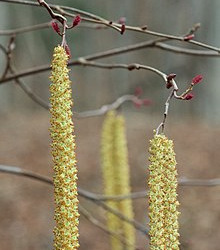
DO NOT CONSUME!
Planet : Moon, Mars Element : Water, Fire
Gods : Odin, Apollo and Aphrodite
Animals : Ravens, Hawks, Seagulls and Foxes
Common Names : Scottish Mahogany, King Of The Forest, Tree Of The Fae
Stones : Lapis Lazuli and Amethyst Colour : Purple
Uses
Use in rituals to allow access to faerie realms.
Facts
Do not cut down, or face bad fortune from fae.
Wood does not rot but hardens.
Almond (Prunus Dulcis)

Energy : Masculine Planet : Mercury Element : Air
Uses
Use in fertility, money, luck charms.
Use in hand fasting rituals and love spells.
Use in rituals for overcoming addiction.
Great as a carrier oil.
Aloe (A.Vera Barbadensis)
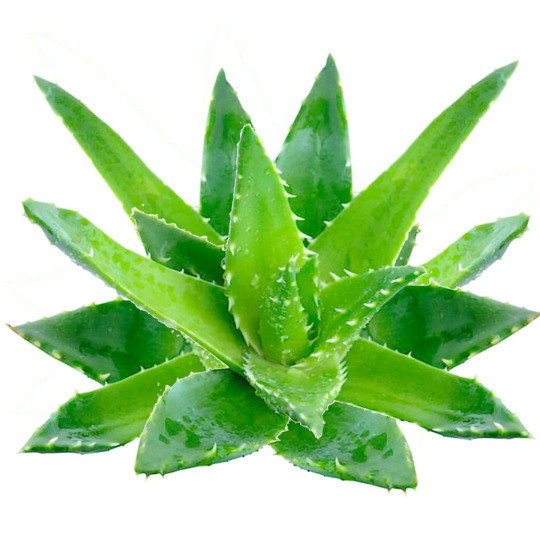
DO NOT DRINK ALOE JUICE IF YOU ARE PREGNANT! KEEP AWAY FROM PETS! CAN CAUSE ALLERGIC REACTIONS!
Energy : Feminine Planet : Moon Element : Water
Gods : Venus and Aphrodite Star Sign : Cancer
Uses
Use to create an amulet against accidents and misfortunes.
Use in spells for love and beauty.
Use in lunar spells.
Alyssum (Lobularia Maritima)
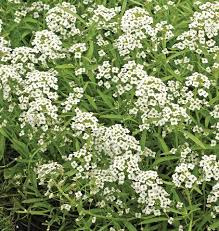
CAN CAUSE DERMATITIS IN SENSITIVE PEOPLE!
Planet : Mercury Element : Air
Uses
Use in protection against hexes and glamours.
Use to deflect spells aimed to mislead you.
The smell is said to evoke peaceful energy, spiritual and emotional balance.
Wearing a sprig helps to prevent and calms angry encounters.
Makes a good addition to moon and fae gardens.
Amaranth (Amaranthus Spp)
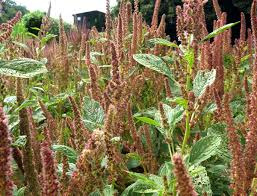
DO NOT EAT RAW IN LARGE AMOUNTS!
Gods : Huitzilopochtli, Artemis, Demeter
Uses
Spells to mend a broke heart.
Dried amaranth flowers can be used to call forth the dead.
Used in Pagan ceremonies.
Used to decorate images of Gods/Goddesses.
Rituals
= A crown of Amaranth flowers worn on the head speeds healing.
Angelica (Angelica Archangelic)
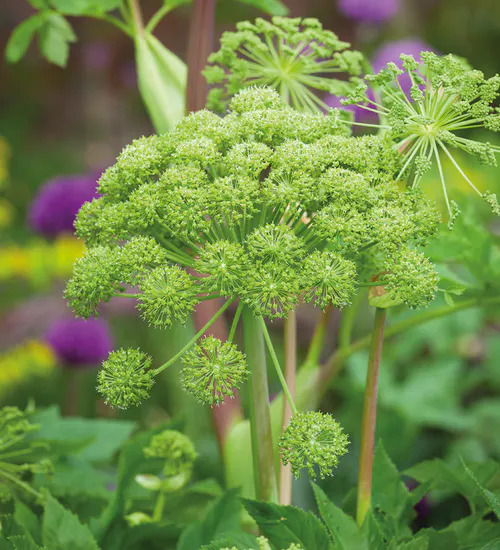
DO NOT USE IF PREGNANT OR IF DIABETIC!
Planet : Sun Element : Fire Gods : Venus
Angels : Micheal and Gabriel
Uses
Used for general protection.
Use for hex breaking.
Use as protection against evil spirits.
Use for blessings.
As an incense its excellent for exorcisms, healing and protection.
Spells/Rituals
Protection = Grow angelica on your property to protect your garden and home.
Amulets = Carry or add to amulets to increase longevity or to ward off illness and evil spirits.
Potions = Add to potions that are designed to remove curses/spells or to banish evil in an area.
Anise (Pimpinellaa Anisum)

CAN BE TOXIC IN LARGE QUANTITIES! DO NOT USE ESSENTIAL OIL UNDILUTED! USE WITH CAUTION IF USING IRON SUPPLEMENTS!
Energy : Masculine Planet : Mercury and Jupiter Element : Air
Gods : Apollo Zodiac Sign : Gemini
Uses
Protection from evil spirits and intentions.
The scent is said to stir up lust.
Aids in divination
Can be used as an offering to spirits.
Spells/Rituals
Restoring Youth = Hang an anise seed head from your bedpost to restore lost youth.
Sleep = Use in pillows to keep away nightmares and ensure a good night’s sleep.
Holy Water = Add to holy water for blessings and exorcisms.
Warding = Can be used in Holy water for blessing and exorcisms.
Apple (Malus Domestica)

Energy : Feminine Zodiac Sign : Taurus
Goddesses : Aphrodite, Iduna, Freya, Pomona and Eris
Symbols : Love, Fidelity, Fertility, Marriage, Beauty, Vanity, Wisdom, The Soul, The Afterlife and Immortality
Uses
Apple blossoms can be used in love and healing incense.
Can be used as an offering to the dead at Samhain.
Apple tree wood can be used to make wands.
Spells/Rituals
Altars = If you slice an apple width wise, you can see a five-pointed star. They can be used to decorate altars during harvest rituals.
Fidelity = Give an apple to you lover as a gift. You eat one half and your lover eats the other. This will ensure fidelity.
Soulmates = If you peel an apple in one piece and throw the peel over your shoulder. It will fall in the shape of your soulmate’s name.
Arnica (Arnica Montana)

DO NOT CONSUME!
Energy : Masculine Planet : Sun Element : Fire
Gods/Goddesses : Freya, Ra and Apollo
Associations : Midsummer, The Harvest and Honour Spirits
Uses
Use in protective rituals.
Use in rituals for crop fertility.
Spells/Rituals
Drive away a thunderstorm = Burn arnica to drive away a thunderstorm, saying : “Set arnica alight, set arnica alight, thunderstorm take flight”
Protection : Plant arnica to keep an area free from spirits entering or leaving the area.
Ash (Fraxinus Spp)
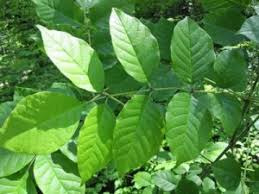
Energy : Feminine Element : Fire, Air and Water
Uses
The wood can be used for wands, staves and besom handles.
It’s a good attracter and conductor of energy.
Spells/Rituals
Sleep = Sleep with ash leaves under your pillow to receive prophetic dreams.
Good Luck = Carry a leaf of ash in your pocket for good luck (ensure that there are an even number of leaves.)
Asparagus (Asparagus Officinalis)

Planets : Mars and Jupiter Element : Fire Gods : Zeus
Symbol : Lust and Fertility
Uses
Lust spells
Fertility spells
Astragalus (Astragalus Membranaceus)
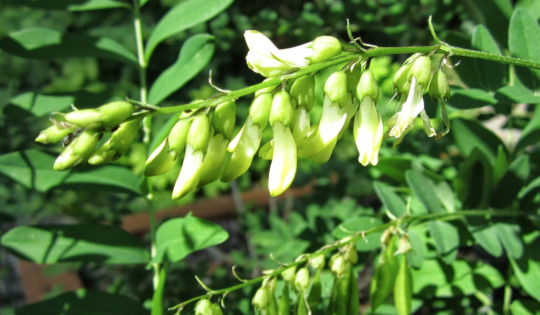
DO NOT CONSUME DURING MENSTRUATION OR IF YOU HAVE AN ACUTE INFECTION!
Planet : Jupiter Element : Air
Uses
Use to increase energy for a variety of applications.
Basil (Ocimum Basilicum)

Planets : Mars Element : Fire
Gods/Goddesses : Vishnu, Tulasi and Erzulie
Uses
To bring happiness, love, peace and money to the household.
Use in spells for attracting love.
Aids astral protection.
Brings luck in physical journeys.
Use in peacemaking spells.
Rituals
Protection = To protect yourself when leaving home rub some basil on your forehead.
Bayberry (Myrica Cerifera, M.Carolinensis)
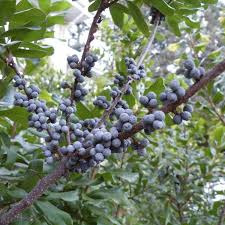
AVOID CONSUMPTION!
Energy : Feminine Planet : Jupiter Element : Earth
Uses
Use in luck and prosperity spells.
Use in money drawing spells.
Spells/Rituals
Luck = Add bayberries to a luck or fortune drawing charm bag.
Bay Laurel (Laurus Nobilis)

Energy : Masculine Planet :Sun Element : Fire
Gods/Goddesses : Apollo, Zeus, Aesclepius, Ceres, Hermes and Cerridwen
Zodiac Sign : Leo
Uses
Protection spells.
Banishing and exorcism rites.
Can purify and drive out illness.
Spells/Rituals
Wishes = Write a wish on a dried bay leaf and burn it for the wish to come true.
Sick = Give a laurel wreath to the ill and it can help aid recovery.
Betony (Stachy Officinalis, Betonica Officinalis)
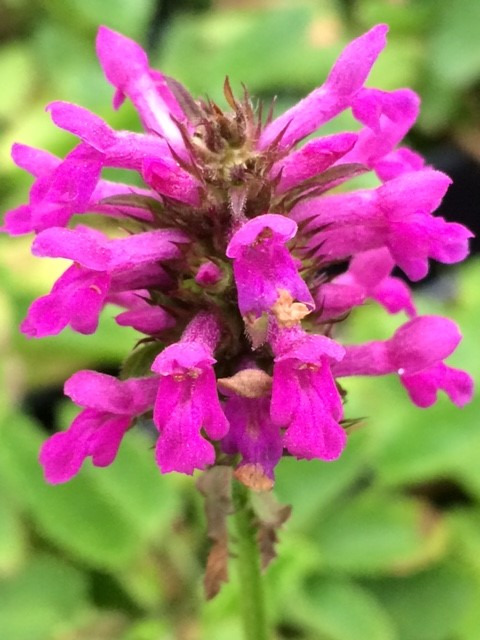
Energy : Masculine Planet : Jupiter Element : Fire
Spells/Rituals
Protection = Can be added to protective mixtures, grown around the home or carried by an individual to protect from negativity, misfortune and hexes.
Protection = Scatter near doors to prevent unwanted energies and people from entering.
Sleep = Stuff into a pillow or place underneath to prevent nightmares and night terrors.
Bindweed (Convolvulaceae)
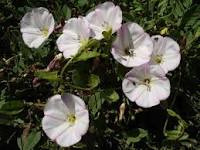
DO NOT CONSUME!
Planet : Saturn Element : Water
Uses
The vines can be used for binding spells.
Use to create bridges and connections between realms.
Blackberry (Rubus Fructicosus, Rubus Canadensis)
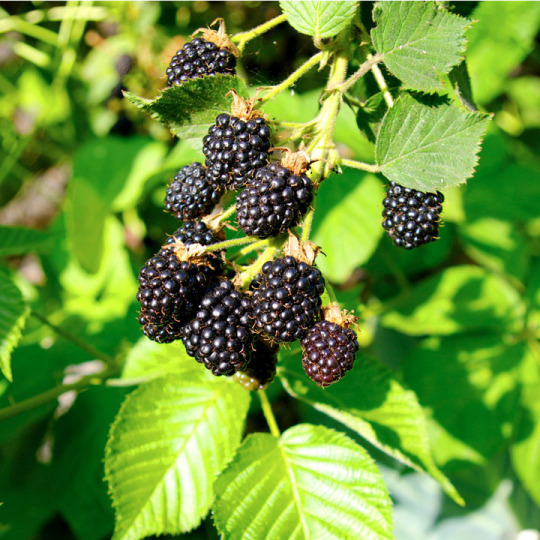
Thorny Branches Blackberry Leaves
Zodiac Sign : Aries Zodiac Sign : Scorpio
Element : Fire Element : Water
Uses Uses
Protective Wreaths. Aphrodisiac Tea
Spells/Rituals (Blackberry Leaves)
Health = Dip nine leaves in a natural water source and lay them on a burn or a red inflamed area. Say to each leaf as you lay them on the wound :
“Three ladies came from the East, one with fire and two with frost, out with fire, in with frost”
Berries
Energy : Feminine Element : Earth
Uses
In magickal cooking for prosperity.
Used to celebrate first harvest festivals such as Lughnassadh.
Black Cohosh ( Cimicifuga Racemosa)
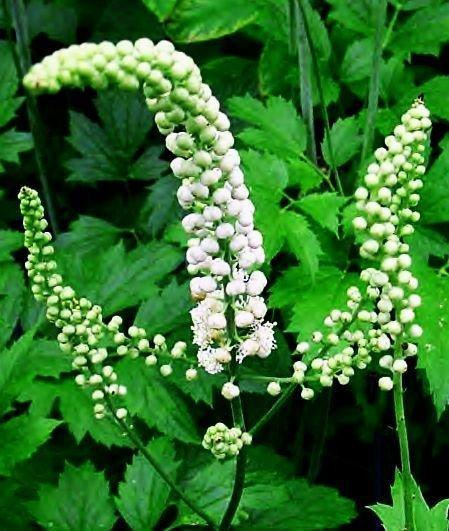
DO NOT CONSUME!
Planet : Pluto Element : Fire Zodiac Sign : Scorpio
Uses
Use in sachets for love, courage and potency.
Add to holy water and sprinkle around the room to drive off negative influences.
Bluebell (Hyacinthoides)
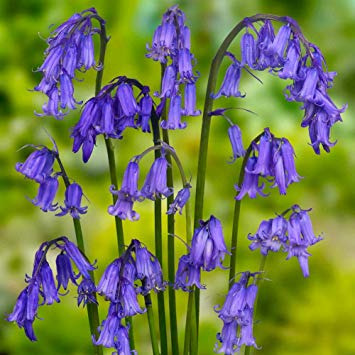
DO NOT CONSUME!
Planet : Saturn and Moon Element : Air
Symbol : Truth, Humility, Gratitude, Everlasting Love and The Fae
Uses
Love spells.
Wear in a wreath to be compelled to speak the truth.
Rituals
Love = Turn a bluebell flower inside out to ensure you will win the heart of the one you desire.
Sleep = Place under a pillow to prevent nightmares.
Burdock (Arctium Lappa)
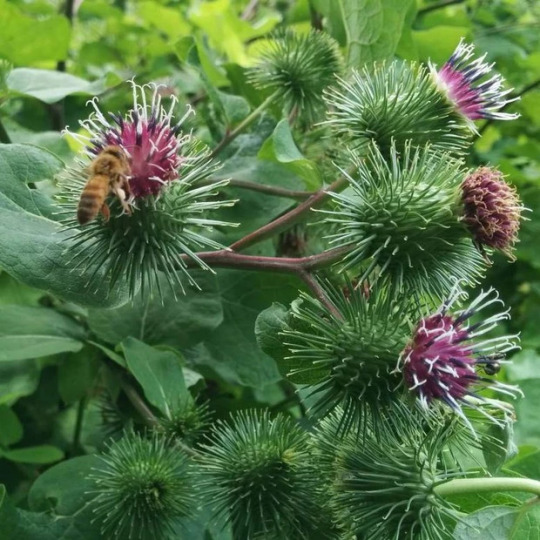
Energy : Feminine Element : Water Planet : Venus
Uses
Use in rituals, amulets and spells to ward off negativity and for general protection.
Use for general healing.
Spells/Rituals
Protection = The root can be carved into a figure, dried and carried or worn as a protective amulet.
Calendula (Calendula Officinalis)

Planet : Sun Symbol : Love
Other Names : Marigold
Uses
Love potions.
Good addition to dream pillows.
Spells/Rituals
Warding = Hang wreaths of marigold over a door to keep evil and negativity from entering.
Cardamom (Elettaria Cardamomum)
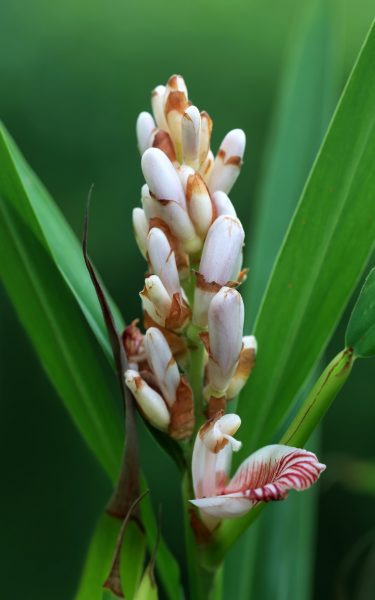
DO NOT CONSUME IF PREGNANT OF IF YOU HAVE GALLSTONES!
Energy : Feminine Planet : Venus Element : Water
Uses
Use in lust sachets
Use to relax the body and to clarify the mind
Spells/Rituals
Love = To encourage a love interest, chew some cardamom seeds before talking to them.
Chamomile (Chamaemilum Noblie)
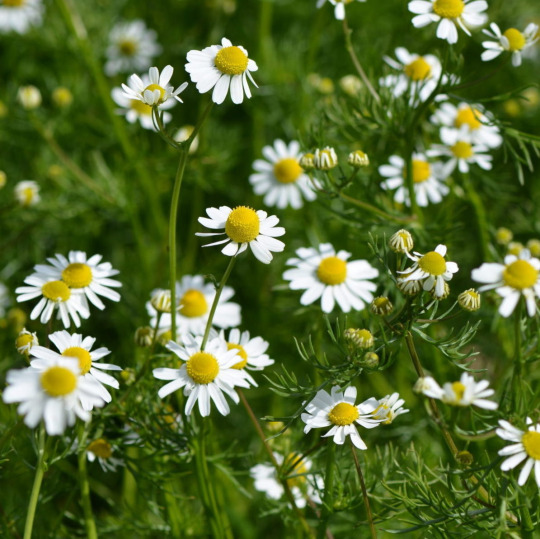
Planet : Sun Element : Water Zodiac Sign : Leo
Chakra : Throat Gods/Goddesses : Ra, Cernunness and Lugh
Uses
Use in money, peace, love, tranquillity an purification spells.
Aids meditation.
Spells/Rituals
Protection = Make an infusion to wash thresholds to help keep unwanted energies or entities from passing through.
Ritual Bath = Use in a ritual bath to release a loved one or release feelings of pain, loss or anger.
Chestnut
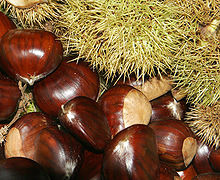
Energy : Masculine Planet : Jupiter Element : Fire
God : Zeus Symbol : Fertility, Desire and Abundance
Uses
Use as talismans can be used for justice, success and to gain sympathy at your audience and to encourage knowledge.
Staves made from this wood encourage longevity, increase energy, enhance intuition and helps with growing energy.
Chrysanthemum
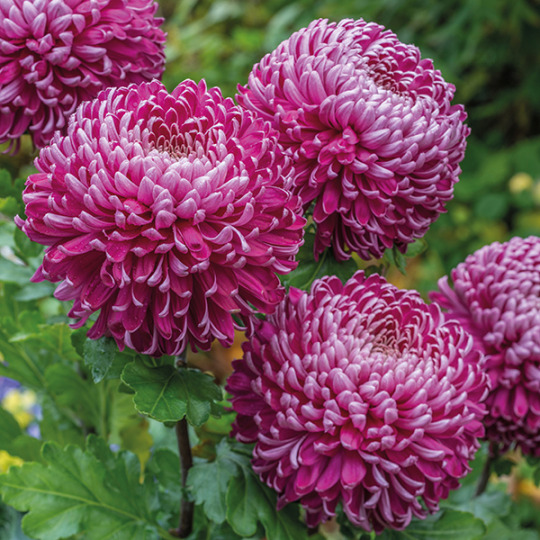
Energy : Masculine Planet : Sun Element : Fire
Spells/Rituals
Altar = Used to decorate your altar for Samhain and for ancestral altars.
Blessing = Burn the dried flowers during house blessings.
Cinnamon (Cinnamomum Zeylanicum)
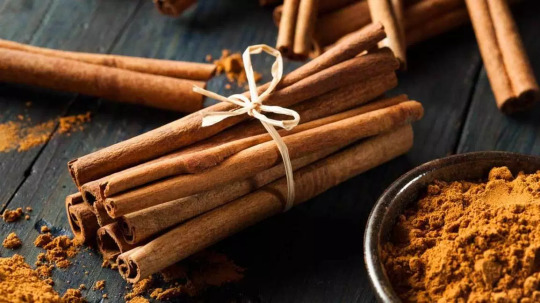
Planet : Sun Element : Fire
Uses
Aids in healing spells
Love spells
Use for charms for love, happiness and money
Cloves (Syzygium Aromaticum)
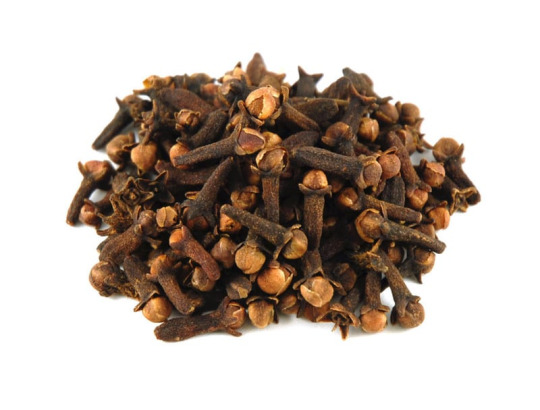
Energy : Masculine Planet : Jupiter Element : Fire
Uses
Use to attract good luck and prosperity.
Use as an aphrodisiac.
Spells/Rituals
Prevention = Burn to prevent people from spreading rumors about you.
Friendship = To keep friendships strong make each friend a cloth bag with seven cloves inside, wear always.
Coltsfoot (Tussilago Farfara)
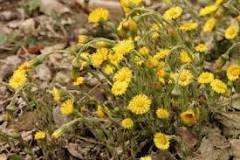
DO NOT CONSUME!
Planet : Venus Element : Water
Uses
Use for holidays such as Imbolc, Ostara and Beltane.
Use in love, tranquillity and money spells.
Can be burned during divination rites.
Comfrey (Symphytum)

DO NOT CONSUME!
Planet : Saturn Element : Water Gods/Goddesses : Hecate
Uses
Protective magick
Substitution for borage
Spells/Rituals
Protection = Add a comfrey leaf to your luggage to make sure it isn’t lost or stolen.
Protection = Wrap your money in a comfrey leaf for a couple days to protect it.
Cleanse = Add to a ritual bath
Corn (Zea Mays)
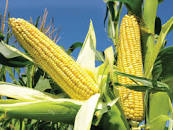
Energy : Feminine Planet : Sun Element : Fire
Uses
Use as an offering in harvest rituals.
Use in spells for luck, prosperity and abundance.
Crocus ( Crocus)
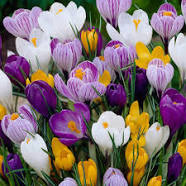
DO NOT CONSUME!
Planets : Mercury and Venus Element : Water
God/Goddesses : Venus, Eos, Persephone and Aphrodite
Uses
Decoration for spring festivals.
Spells related to new beginnings.
Used in spells for love, friendship, settling disputes, peace and divination.
Cyclamen
DO NOT CONSUME! DO NOT CONSUME OR TOUCH IF PREGNANT!
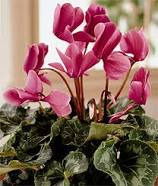
Energy : Feminine Planet : Mars Element : Water
God/Goddesses : Hecate
Uses
Use in spells to increase joy and happiness and also to send away unwanted people.
Love spells.
Spells/Rituals
Protection = The oil can be worn to protect oneself from a broken heart.
Sleep = Can help keep nightmares and hexes away.
Daisy (Bellis Perennis)

CAN CAUSE DERMATITIS IN SOME PEOPLE!
Energy : Feminine Planet : Venus and The Sun Element : Water
Uses
Offering to Goddesses.
Good wreaths at Beltane.
Spells/Rituals
Love = Daisies are most commonly known for their diviniatory :
“He loves me, he loves me not” spell practised by young girls.
Dandelion (Taraxacum Officinale)
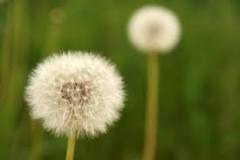
Energy : Masculine Planet : Jupiter Element : Air
Zodiac Signs : Sagittarius and Pisces
Gods/Goddesses : Hecate, Brigid, Belenas and other solar deities.
Uses
Aids in calling spirits.
Increases psychic ability.
Spells/Rituals
Spirits = Pouring boiling water over a bowlful of roots will aid in calling spirits.
Wish = Make a wish and blow the seeds off a dandelion head.
Devil’s Claw (Harpagophytum)
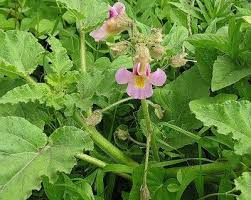
DO NOT USE; IT IS AN ENDANGERED SPECIES!
Planet : Mars Element : Fire
Uses
Useful for banishing, exorcisms and purification
I hope you guys found this helpful. Just this post took me a couple hours. I do intend to do the rest in 4 or 5 letter bundles (Though i may not post one instalment every day). If anyone has any suggestions, ideas or needs help fell free to comment or message me. Blessed be!
#witch#witchcraft#wiccamagic#wicca for beginners#pagan wicca#wiccan#wiccalife#pagan witch#ecletic pagan#pagancommunity#pagan#witchlife#witchblr#kitchen witch
499 notes
·
View notes
Photo

MYRICA CERIFERA Bayberry (MYRICA) MYRICA CERIFERA Bayberry (MYRICA) Marked action on the liver, with jaundice and mucous membranes. Persistent sleeplessness. Jaundice.
0 notes
Text
Southern Wax Myrtle for Birds & Bees

Plant native! Grow a wildlife friendly garden. Southern Wax Myrtle, Morella cerifera (the plant formerly known as Myrica cerifera), is a fragrant native evergreen shrub which is useful for privacy hedges and wet areas. The flowers have no ornamental value but pollinators love them.
This plant is great to include in a wildlife friendly landscape design. The wax covered berries provide winter fat for birds and the tangled branches make great nesting sites.
A few things we have learned from growing wax myrtle:
Smaller birds tend to prefer it because the thin outer branches are difficult for heavier birds to manage.
It smells wonderful in the rain. Wax myrtle is also known as bayberry or candle berry and has a delicious, spicy scent. The fragrance alone makes it worth planting.
Plant in spring. Wax myrtle needs time to settle before it can handle a harsh winter.
Wax myrtle is adaptable but the first year will require ample water to establish.
They do great in wet areas, drainage ditches, pond and creek sides where you can allow it to colonize and help with erosion.
It can take a hard pruning to keep it from looking wild. We have seen them tree formed and they are unique.
Plants are male & female so you will need to get them from different sources to avoid clones.
For west coast people, there is California Wax Myrtle (Morella californica)
#native plants#wildlife#habitat#garden#gardening#wild bird#backyard habitat#backyard birds#trees#shrub#birding#bird watching#gre#wildlife friendly#sustainable#eco friendly#green homes#green living#landscape#landscape design#bees#save the bees#pollinators
8 notes
·
View notes
Photo

You’ve probably discovered that conventional #medicine has little to offer the bleary-eyed sufferer. Over-the-counter remedies such as aspirin, and even prescription drugs, only suppress symptoms; they don’t cure the illness or make you well any faster. While antihistamines dry sinuses, they can also irritate your nose and throat and prolong the infection. As for antibiotics, including penicillin, they don’t target viruses at all and should only be prescribed if a bacterial infection follows the cold or #flu. Simply suppressing symptoms can impair your body’s natural ability to fend off disease. Symptoms tell you what’s wrong and what to do about it. Headaches, sore muscles and feeling tired indicate that you need rest, and fever or indigestion is a sign to eat lightly. Herbal treatments help your body heal itself and boost natural immunity. Among the #herbs that have already been found to inhibit viruses, including the flu, are lavender (Lavandula angustifolia) and eucalyptus (Eucalyptus globulus). Also packing an antiviral punch are rosemary (Rosmarinus officinalis), lemon balm (Melissa officinalis), hyssop (Hyssopus officinalis), peppermint (Mentha ¥piperita) and teatree (Melaleuca alternifolia). All of these herbs also foil bacteria responsible for infections of the throat, lungs, sinuses, ears and eyes that often tag on the heels of a cold or flu. In addition, they relax coughing spasms, aid digestion, and lower a fever by encouraging circulation and sweating. Tannin compounds found in other herbs such as white oak bark (Quercus alba) and bayberry (Myrica cerifera) destroy flu and other types of viruses, so it’s no wonder they are traditional cold and flu treatments. You can even eat your way to good health by seasoning your food with garlic (Allium sativum), thyme (Thymus vulgaris), marjoram (Origanum majorana), cinnamon (Cinnamomum verum) and black pepper (Piper nigrum) to eradicate viral and bacterial infections. Ginger (Zingiber officinale) is not only antiviral, it also lowers fevers and reduces muscle soreness. Source: https://ift.tt/2i4kpnN . . . . . https://ift.tt/2P14KYv
2 notes
·
View notes
Text
Palmetto Derma Rejuvenating Antioxidant Mask
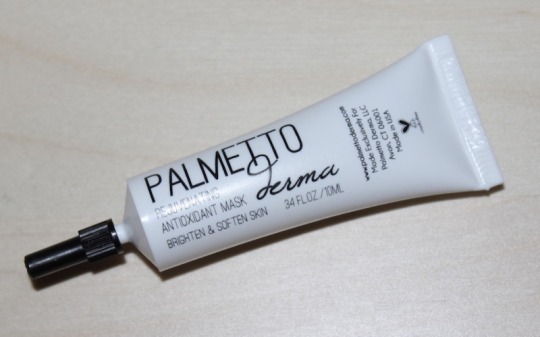
Price: $64.00
Claims: Welcome to an antioxidant treasure trove! This mask puts your skin on the fast track to soft, smooth and glowing! The soft clay of the mask gently purifies skin, by absorbing impurities and cleaning pores and skin. The advanced antioxidants defend against free radicals and reverse daily skin damage. This mask is whipped-up to velvety perfection for luxurious and easy application. The cooling effect refreshes and soothes the skin as the mask works its magic, leaving skin bright and smooth! Our Rejuvenating Antioxidant mask includes ingredients such as Hyaluronic Acid to hydrate skin, while the preventative ingredients work to enhance skin for lifelong radiance. Get ready to feel tingly all over when you see these stellar results!
Ingredients:
Aqua (Water): Primarily used as a solvent in cosmetics and personal care products in which it dissolves many of the ingredients that impart skin benefits, such as conditioning agents and cleansing agents. Water also forms emulsions in which the oil and water components of the product are combined to form creams and lotions.
Organic Aloe Barbardensis Leaf (Aloe Vera Extract): Extracted from the leaves of the aloe plant; used as a skin softener, anti-irritant, and moisture replenisher.
Kaolin Clay: A fine white clay powder; used to absorb water and oil secreted by the skin, including excess sebum.
Glycolic Acid: An alpha hydroxy acid (AHA) used to help maintain natural pH levels and gently exfoliate surface skin cells.
Squalane: The saturated portion of emollient ingredient squalene, which is a natural component of human skin sebum (oil). It is a wonderfully moisturizing ingredient as well as being a source of replenishing fatty acids and antioxidants. Note that because it’s highly saturated, squalane is less prone to breaking down in the presence of air than less-saturated squalene.
Lactic Acid: Helps to control the pH of finished cosmetic products
Isopropyl Palmitate (Derived from Palm Oil): Texture enhancer and emollient as used in cosmetics. It can potentially be problematic for those with oily skin, depending on the amount in the product and your skin’s response. May be synthetic or derived from plant and animal sources.
Sodium Ascorbyl Phosphate (Vitamin C): A stable, water-soluble form of vitamin C that functions as an antioxidant and is potentially effective for brightening an uneven skin tone.
Hydrogenated Castor Oil: An emollient, though its unique property is that when dry it forms a solid film that can have water-binding properties. Castor oil can also enhance the absorption of other cosmetic ingredients. It is rarely associated with skin sensitivity, but can have a slightly sticky feel on skin.
Kosher Vegetable Glycerin: An emollient and humectant derived from vegetable oils that helps skin retain moisture.
Sodium Stearate: Emulsifies ingredients and creates lather. It also emulsifies formulas, preventing them from separating into oil and water-based components.
Cetearyl Alcohol: Helps two or more liquids, that don't usually combine to form a single liquid; often referred to as an ‘emulsion'
Cetearyl Glucoside: Formed by the condensation of cetearyl alcohol (fatty acid) with glucose. Can be naturally derived (from coconut/corn oil) or chemically synthesized. An emulsifier used in oil in water formulations. It helps skin and hair retain moisture, and gives a velvety after touch.
Stearyl Alcohol: A naturaly fatty alcohol derived from stearic acid, coconut oil or vegetable fatty acids, and is used to soothe and soften as a conditioning agent and as an emulsifier. It can also be used to thicken formulas, adding body and viscosity.
Organic Cocos Nucifera (Coconut Oil): Emollient oil expressed from coconut kernels, a moisturizing surfactant and emollient. Seals in moisture to protect tresses from breakage and excessive heat exposure.
Cetyl Alcohol: Works as an emollient, emulsifier, thickener and carrying agent. It keeps the oil and water parts of an emulsion from separating, and gives products good spreadability. As a thickening agent and surfactant, it helps alter the viscosity and increase the foaming capacity of non-aqueous and aqueous solutions. It is often misinterpreted as an "alcohol" related to ethyl or rubbing alcohol, both of which can be extremely drying to the skin. The truth, in fact, is quite the opposite, as cetyl alcohol is well known to effectively condition and soften the skin and hair. Because of its multi-functional capabilities.
Sodium Hydroxide: An inorganic compound used to control the pH levels or serve as a buffering agent. Has the ability to dissolve grease, oils, fats and protein based deposits. Considered a strong irritant.
Alpha Lipoic Acid: An enzyme that, when applied topically on skin, appears to be a very good antioxidant. Taken internally, alpha lipoic acid is a water- and fat-soluble antioxidant capable of regenerating other antioxidants, such as vitamins C and E. It is also believed to exert numerous soothing effects.
Vaccinium Angustifolium (Blueberry): A botanical extract rich in antioxidants, such as anthocyanins and flavonoids.
Organic Vaccinium Macrocarpon (Cranberry): Extract of the cranberry fruit. Natural components known as proanthocyanidins are responsible for this extract’s antioxidant and skin-soothing properties.
Prunus Amygduls Dulcis (Sweet Almond Oil): Extracted from the seeds; used as an emollient. Helps skin maintain optimal moisture balance
Vitis Vinifera (Grapeseed Oil): An antioxidant that helps fight damaging free radicals that can cause premature signs of aging.
Wildcrafted Mahonia Aquifolium (Oregon Grape): A plant extract known as Orgeon grape, it functions as a calming ingredient, antioxidant, and astringent.
Wildcrafted Camellia Sinensis (Green Tea): Tea plant native to Asia that helps fight free radicals; known for its antioxidant and anti-irritant properties.
Organic Glycyrrhiza Glabra (Licorice): Used as a whitener, antioxidant, anti-inflammatory and moisturizer. Helps control oil production, and helps calm and soothe acne-prone skin. It can be used to reduce dark age spots and whiten skin.
Wildcrafted Myrica Cerifera (Bayberry): Works as an antiseptic, thickening agent and emulsifier with soothing and softening properties that heal the skin.
Rubus Idaeus (Raspberry Seed Oil): Extract of the raspberry fruit, helps fight free radicals, soothe and condition skin.
Hippophae Rhamnoides (Seabuckthorn Oil): Berry extract that grows on a shrub-like tree. The fruit of this plant contains malic and acetic acids (AHA-like ingredients that give the fruit an astringent, acidic taste) as well as beneficial compounds known as flavonoids, plus fatty acids. Sea buckthorn is a rich source of vitamin C, but most of it is lost when the fruit is processed for production (which includes manufacture for use in cosmetics products).
Organic Simmondsia Chinensis (Jojoba Oil): Extracted from the desert shrub; used as a moisturizer and emollient.
Calophyllum Inophyllum (Tamanu Oil): From a tree native to Polynesia, all of the miraculous claims attributed to it are hinged on anecdotal, not scientific, evidence. There’s no harm in using this oil in skin care—like most oils, it is composed of phospholipids and glycolipids, and these are natural constituents of healthy-looking skin and are good hydrating agents.
Rosa Canina (Rose Hip Oil): Protects hair from UV and free-radical damage and delivers antioxidants and essential fatty acids to tame frizz and balance hydration.
Ubiquinone (Coenzyme Q10): A vitamin-like, fat-soluble substance naturally present in the body. Applied to skin, it can have antioxidant benefits due to its energizing effect on factors in skin that tend to slow down with age and cumulative sun exposure.
Prunus Armeniaca (Apricot Kernel Oil): Emollient plant oil pressed from the seeds of apricots, and similar to other non-fragrant plant oils in terms of its emollient, skin-smoothing, and antioxidant benefit.
Phytic Acid: Component of plants that has antioxidant properties.
Phospholipids: Phospholipid found in egg yolks and plants. Widely used in cosmetics as an emollient and water-binding agent. Also has skin-restoring ability.
Tocopherol (Vitamin E): Used as an antioxidant and skin conditioner.
Lecithin: An emollient and water-binding agent. Also has skin-restoring ability.
Pyrus Malus (Apple): Helps fight free radicals, soothe and condition skin.
Citrus Medica Limonum (Lemon): A citrus fruit used in skincare for its astringent properties.
Saccharum Officinarum (Sugar Cane): Sugar canes are the main source of glycolic acid. An alpha hydroxy acid (AHA) used to help maintain natural pH levels and gently exfoliate surface skin cells.
Cymbopogon Schoenanthus (Lemongrass): Used for its purifying properties.
Ascorbyl Palmitate (Vitamin C Palmitate): Stable and nonacidic form of vitamin C that is effective as an antioxidant. Particularly effective at reducing environmental damage.
Sclerotium Gum: Used as a thickening agent.
Potassium Sorbate: Used as a preservative, almost always used in conjunction with other preservatives.
Xanthan Gum: Natural ingredient used as a thickening agent, texture enhancer, and to stabilize emulsions, which is a general term for mixtures of unlike substances such as oil and water.
Phenoxyethanol: A glycol ether and bactericide (that functions as a disinfectant, antiseptic or antibiotic) that is primarily used as a preservative. It is also seen as a fragrance additive.
Benzyl Alcohol: Organic alcohol that occurs naturally in some fruits (apricots, cranberries) and teas. Its chief function in cosmetics is as a preservative, and it’s among the least sensitizing preservatives in use. High amounts of benzyl alcohol can impart a noticeable floral-like scent to products, as it is part of the fragrance makeup of some essential oils such as jasmine. As a volatile alcohol, it can pose a risk of sensitivity when used in high amounts, but is considered safe as used in cosmetics.
Organic Centella Asiatica (Gotu Kola Extract): Known as "the fountain of life,” a natural, herbal anti-inflammatory and wound healer. Mildly antibacterial, anti-viral, anti-inflammatory, anti-ulcerogenic, anxiolytic, a cerebral tonic, and circulatory stimulant. Strengthen the skin, boost antioxidants in wounds, and increase blood supply to the area. It's also thought to boost the production of type I collagen and myofibroblasts. Based on these findings, its been used topically for minor burns, psoriasis, prevention of scar formation following surgery, and prevention or reduction of stretch marks.
Organic Equisetum Arvense (Horsetail Plant Extract): A perennial plant, also called "scouring rush." Its extract is used for its astringent, softening, and strengthening properties.
Organic Pelagonium Gravoleons (Geranium Extract): Extract that can have potent antioxidant properties. The oil form of geranium is fragrant and can be a source of sensitivity.
Cranberry Fibers: Gentle exfoliant
Hibiscus Petals: Soothe the scalp and soften the hair follicles.
Cassia Angustifolia Seed Polysaccharide: A skin conditioning agent. Effectively repair dryness, provide long lasting suppleness & moisture, exhibit film-forming capacities and retain water on the surface of both skin and hair. In can also function as an anti-inflammatory and treatment for acne.
Wildcrafted Vinca Major (Periwinkle): A skin conditioning agent. Astringent and soothing.
Dipeptide Diaminobutyroyl Benzylamide Diacetate (Peptides): A synthetic neuro peptide. This skin conditioning agent is categorized as a neuro-peptide, and believed to block the body's uptake of Na+, which in turn causes the facial muscles to relax and prevent the formation of expression lines (wrinkles). It serves as the active ingredient contained in SY-NAKE- an anti-wrinkle product that claims this ingredient to mimic the effects of Walgerin 1- a peptide found in snake venom known for its muscle relaxing properties.
Taraxacum Officinale (Dandelion Extract): Has astringent and soothing properties.
My Thoughts: I recently adopted a german shepherd puppy. She is cute but insane. She loves to jump on my face in the morning. She has left me with a few scars. I needed something that would hydrate my skin and and heal it quickly. I decided to see if Palmetto Derma Rejuvenating Antioxidant Mask was up to the task.
Palmetto Derma Rejuvenating Antioxidant Mask came from my Ipsy box. Its a sample size with a squeeze tube. This squeeze tube was different because it didn’t have an opening. I had to cut the pointed squeeze applicator before using it. The clay texture is off white with black speckles. I use this probably every other day. With this clay mask I gently pat it on. I immediately smelled of pepper! At first it was overwhelming but I eventually got use to it. I leave it on for about 5 minutes, it doesn’t feel tight on the skin at all. Than I rinse it off in a circular motion. The circular motion helps remove the dead skin on the surface, without leaving my skin red. Its gentle enough for me to use it every other day, it nicely hydrates my skin. It even healed my scars in 2 weeks! What I love the most is it makes my skin soft and smooth to the touch. What I hate the most is that this mask is crazy expensive.
Would I purchase Palmetto Derma Rejuvenating Antioxidant Mask? Yes because it leaves my skin feeling amazing because it removes dead skin on the surface. However I will only purchase it if is on sale.
Pros:
Received from Ipsy
Sample size squeeze tube
Clay texture
Off white with black speckles
Gentle on the skin
Pepper scented
Leave on for 5 minutes
Comfortable to wear
Remove dead skin on the surface
Doesn’t leave skin red
Hydrates & heals skin
Soft & smooth skin
Cons:
Have to cut off the tip of the applicator to use
Expensive
If you found this review helpful please click on the heart or reblog. Feel free to reply with your thoughts on the product.
#Palmetto Derma Rejuvenating Antioxidant Mask#Palmetto Derma#Palmetto#review#reviews#blog#blogs#love#loves#like#likes#heart#hearts#reblog#reblogs#reply#tumblr#tumblr blogs#tumblr blog#tumblr review#tumblr reviews#beauty#beauty reviews#beauty review#beauty blog#beauty blogs#beauty product#beauty products#skincare#skincare blog
5 notes
·
View notes
Text


Homeopathic Mother Tincture Ø 20 ml, Homeopathic Remedies in dilution 6c, 12c, 30c, 200c, 1M, 10M, CM, in 20 ML Liquid and Globules 4g Tube buy at
AL-HAKIM Homeopathic Pharmacy Drugstore Richmond Hill Ontario
Abies Canadensis, Abies Nigra, Abrotanum, Absinthium, Achillea Millefolium, Acid Phos, Aconitum Napellus, Adonis Vernalis, Aesculus Hippocastanum, Agaricus Muscarius Agnus Castus, Agrimonia Eupatoria, Agropyron Repens, Alchemilla Vulgaris, Alfalfa, Allium Cepa , Allium Sativum, Allium Ursinum, Althaea officinalis, Ambrosia Artemisiaefolia, Anethum Grav, Angelica Archangelica, Anis Vulgaris, Anthemis Nobilis, Antimonium Tartaricum, Apis Mellifica, Aralia Racemosa, Arbutus Andrachne, Aristolochia Clematitis, Arnica Montana , Artemisia Vulgaris, Asclepias Syriaca, Asclepias Tuberosa, Asoka, Aspidosperma Quebracho , Asterias Rubens, Astragalus Mollissimus, Avena Sativa, Baptisia Tinctoria, Belladonna, Bellis Perennis, Benzoinum Odiferum, Berberis Aquifolium, Berberis Vulgaris, Betula Alba, Blatta Orientalis, Cactus Grandiflorus, Calamus Aromaticus, Calendula Officinalis, Calumba, Camphora, Capsicum Annuum, Carduus Benedictus, Carduus Marianus, Carthami, Cascara Sagrada, Cataria Nepeta, Caulophyllum Thalictroides, Centaurea Cyanata, Cephalandra Indica, Cetraria Islandica, Chamomilla, Chapparo Amargosa, Chelidonium Majus, Chimaphila Umbellata, Chionanthus Virginica, Cichorium Intybus, Cimicifuga Racemosa, Cinchona Officinalis, Cistus Canadensis, Citrus Limonum, Citrus Vulgaris, Coccus Cacti, Cochlearia Armoracia, Coffea Cruda, Colchicum Autumnale, Collinsonia Canadensis, Condurango, Conium Maculatum, Convallaria Majalis, Convolvulus Arvensis, Cornus Alternifolia, Cornus Circinata, Cornus Sanguinea, Crataegus Oxyacantha, Cucurbita Pepo, Curcuma Longa, Cydonia Vulgaris, Cynara Scolymus, Cypripedium Pubescens, Damiana, Daucus Carota, Digitalis Purpurea, Dipsacus Fullonum, Drosera Rotundifolia, Dulcamara, Ebuli, Echinacea Angustifolia, Echinacea Purpurea, Epilobium Palustre, Eriodyction Glutinosum, Erythraea Centaurium, Eschscholtzia Californica, Eucalyptus Globulus, Euonymus Atropurpureus, Eupatorium Perfoliatum (Boneset), Euphrasia Officinalis, Filix Mas, Foeniculum Vulgare (Fennel Seeds), Fragaria Vesca, Franciscea Uniflora, Fraxinus Americana, Fucus Vesiculosus, Fumaria Officinalis (Fumitory), Galangal, Galega Officinalis, Gambogia, Garcinia, Gaultheria, Gentiana Chirata, Gentiana Lutea, Geranium Maculatum, Geum Urbanu, Gingko Biloba, Ginkgo Biloba , Ginseng, Glechoma Hederacea (Ground Ivy), Glycyrrhiza Glabra, Gnaphallium Dioicum, Granatum, Grindelia Robusta, Grindelia, Gymnema Sylvestre, Hamamelis Virginiana, Harpagophytum (Devil's Claw, Hedera Helix , Helianthus Annuus, Helianthus Tuberosus, Helleborus Niger, Helonias Dioica, Herniaria Glabra, Hydrangea Arborescens, Hydrastis Canadensis, Hydrocotyle Asiatica, Hypericum Perforatum, Hyssopus Officinalis, Ignatia Amara, Ilex Aquifolium, Illicium Anisatum, Imperatoria Ostruthium, Inula Helenium, Iris Florentina, Iris Versicolor, Jaborandi, Jalapa, Jonesia Asoca, Juglans Regia, Juniperus Communis, Justicia Adhatoda, Kamala, Kreosotum, Lachnanthes, Lamium Album, Lapathum Acutum, Lappa Major (Arctium Lappa), Ledum Palustre, Leonurus Cardiaca, Leptandra Virginica, Lespedeza Capitata, Levisticum Officinale (Lovage), Linaria Vulgaris, Linum Usitatissimum, Lobelia Inflata (Indian Tobacco), Lycopus Virginicus, Maca, Malva Sylvestris, Marrubium Vulgare, Melissa Officinalis, Mentha Piper, Mentha Pulegium, Millefolium, Mitchella Repens, Monarda Fistulosa, Muira Puama, Muria Pauma, Myrica Cerifera, Myrrha, Nasturtium Aquaticum, Nux Moschata, Nux Vomica, Nymphaea Odorata, Oenothera Biennis, Oleum Cajuputi, Olibanum, Ononis Spinosa, Onosmodium Virginianum, Origanum Vulgare,
0 notes
Text
Discover the Natural Wonder of Genuine Bayberry Wax: A Hidden Gem in Candle Making
Introduction:
Bayberry wax is a natural wax derived from the waxy coating of the berries of the bayberry shrub (Myrica cerifera). This unique and aromatic wax has been valued for centuries for its decorative, medicinal, and practical uses. In this article, we will explore the properties, benefits, and applications of Bayberry Wax.
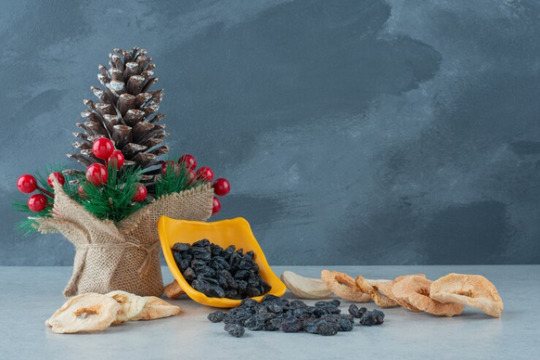
Properties and Extraction:
Bayberry wax is known for its beautiful green color and its pleasant, natural scent. It is a hard and brittle wax that solidifies at room temperature. The extraction process of bayberry wax is labor-intensive. The berries are harvested, dried, and then boiled to release the wax, which rises to the surface and solidifies upon cooling. The solidified wax is then skimmed off and purified to obtain high-quality bayberry wax.
Benefits of Bayberry Wax:
Aromatic Qualities: One of the key characteristics of bayberry wax is its delightful fragrance. When burned, it releases a pleasant and soothing aroma, making it a popular choice for scented candles and incense. The aroma is often described as earthy, sweet, and reminiscent of the outdoors.
Decorative and Craft Uses: Bayberry wax is widely used in decorative crafts such as candle-making, soap-making, and encaustic art. Its unique green color adds an aesthetic appeal to handmade creations, making it a favorite among artisans and craft enthusiasts.
Moisturizing and Protective Properties: Bayberry wax has emollient properties that make it a valuable ingredient in skincare and cosmetic products. It forms a protective barrier on the skin, helping to retain moisture and prevent dehydration. It is often found in lip balms, lotions, creams, and ointments, providing nourishment and hydration.
Sustainable and Eco-friendly: Bayberry wax is a sustainable resource as it is obtained from the berries of the bayberry shrub. The wax extraction process is typically done in a way that does not harm the shrub or the environment. This makes bayberry wax an eco-friendly alternative to synthetic waxes derived from petrochemicals.
Applications of Bayberry Wax:
Candle Making: Bayberry wax has a long history of use in candle-making. It has a higher melting point than many other waxes, resulting in candles that burn longer and more slowly. Bayberry candles are often associated with special occasions and holiday traditions.
Skincare and Cosmetics: Bayberry wax is used in various skincare and cosmetic products due to its moisturizing and protective properties. It helps to nourish the skin, lock in moisture, and create a smooth texture. It can be found in lip balms, creams, lotions, and other personal care items.
Herbal Remedies: In traditional medicine, bayberry wax has been used for its potential therapeutic properties. It has been employed in salves, ointments, and poultices for its astringent and anti-inflammatory qualities, believed to help with skin conditions and minor wounds.
Encaustic Art: Encaustic art is a technique that involves painting with molten wax. Bayberry wax, with its unique color and properties, is often used in encaustic art to create textured and visually striking artworks.
Conclusion:
Bayberry wax, with its aromatic qualities, moisturizing properties, and eco-friendly sourcing, is a versatile and valuable natural wax. From its use in candle-making and crafts to its presence in skincare and cosmetics, bayberry wax offers an array of benefits. Its rich history and unique characteristics make it a cherished ingredient in various applications. Whether you are seeking a natural and sustainable wax for your candles or a moisturizing component for your skincare routine, bayberry wax proves to be a compelling choice.
0 notes
Photo

Autumn! Observing the flora and fauna around us and while visiting family in Orangeburg. “The Yellow Garden Spider, Argiope aurantia, These spiders produce venom that is harmless to humans, but helps to immobilize prey like flies, bees, and other flying insects that are caught in the web. The web of the garden spider contains a highly visible zigzagging X-shaped pattern called a stabilimentum.” The spiders were in my (Belinda’s) parents’ yard in Orangeburg. The mushrooms are here , 5&6 are from mycelium in wood chips in a small plot on the floor of deciduous trees. We hope to see more soon. There’s plenty of turkey tail around here , we’re expecting to see chicken of the woods soon and lion’s mane. The fragrance of the Wax Myrtle is beautiful, at this time of year it produces tiny berries. “Native Indians used the leaves for seasoning as we would a bay leaf. The berries were used for seasoning as well but sparingly as they are waxy. Grind them and use like pepper. Though used as a seasoning, that was not the wax myrtle’s main value: The berries when boiled yield a wax that is excellent for making candles. Indeed, that is reflected in the tree’s name Myrica cerifera, MEER-ih-kuh ser-IF-er-uh.” #nature #naturephotography #observingnature #environment #flora #fauna #spiders #spidersofinstagram #waxmyrtle #bayberry #mushrooms #mushroomsofinstagram #shrooms🍄 #mycelium #autumn #fall #walks (at Morning Glory Homestead) https://www.instagram.com/p/CF90k22FCpA/?igshid=1xdxy12qgf3h9
#nature#naturephotography#observingnature#environment#flora#fauna#spiders#spidersofinstagram#waxmyrtle#bayberry#mushrooms#mushroomsofinstagram#shrooms🍄#mycelium#autumn#fall#walks
0 notes
Text
Bayberry

Myrica cerifera, M. carolinensis
Other Names Wax myrtle, Myrica, Candle Berry, Arbre a suif, Myricae Cortex, Tallow Shrub, Wachsgagle, Tallowberry, Candleberry Myrtle, Northern Bayberry, Southern Bayberry, Small Waxberry, Yang-mei, Vegetable Wax
Bayberry grows in thickets near swamps in sandy areas, especially near the Atlantic coast and near Lake Erie. It is a shrub that can reach up to eight feet tall and wide. The lanceolate leaves are shiny, dotted on both sides and about 1-4 inches long. They are very fragrant when rubbed.
The flowers are small and unisexual, white or green. They appear in the early spring from March to May, usually before leaves are fully expanded. Globular fruit are drupes (like cherries), very hard dark green and covered with a waxy substance. They may remain on the tree for several years.
History and Folklore
Settlers in the Louisiana area first used myrtle wax in the 1600s. The water from boiling the wax off of the berries was also used to treat typhoid dysentery, which was a serious problem at the time. Soap from myrtle wax was considered to be much gentler than common lye soap. In addition to washing, it was used for shaving and soap plasters.
Propagation
Bayberry is a hardy deciduous shrub that will grow well to zone 2 in full sun. It is very adaptable to difficult soil conditions and doesn’t mind poor, sandy or heavy clay soils. It does best in slightly acid soil, however.
Bayberry will grow as wide as it is tall and it can get up to 8 feet tall. Pruning will control its growth well.
Bayberry is an attractive ornamental shrub and serves as a shelter for wildlife in a wildlife garden. It is especially useful in gardens where the soil is sandy and had little nutrients. The berries are enjoyed by many types of birds including tree swallows, eastern meadowlarks, red-bellied woodpeckers, and grey catbirds and the shrubs make great nesting sites.
Because the flowers are unisexual, you will need at least two bayberry bushes, one of each sex, to get berries.
Harvesting & Storage
Harvest the root in late autumn and pound to separate the bark from the root. Dry thoroughly and powder. Store in a dark place in tightly sealed containers.
Gather the berries early in the morning in the fall or winter and boil to remove the wax. The wax will float on top and can be skimmed off. It is called myrtle wax. It can be used to make soap or candles.
Magical Attributes
Bayberry is feminine in nature and associated with the Earth element and the planet Jupiter.
Bayberry candles are burned to bring luck and prosperity to the household. Likewise, bayberries and bayberry leaves can be useful in money-drawing spells. Try adding bayberries to a luck or fortune sachet or mojo bag.
The candles themselves are of high-quality, long-burning, and very useful in candle magic.
Household Use
Candles can be made from bayberry wax. Bayberry candles are harder than beeswax candles, burn with little smoke and have a pleasant odour.
Bayberry boughs with berries on them are very attractive in floral arrangements and smell wonderful.
Healing Attributes
The decoction is a good gargle for sore throats and mouth ulcers. It is also said to strengthen gums.
The water in which the berries have been boiled to remove the wax can be used to treat dysentery.
Poultices and washes made from the powdered root have been used for ulcers and itchy skin.
Culinary Use
The fragrant leaf can be used similarly to bay leaf (See Bay Laurel).
Bayberry can cause vomiting in large doses. Side effects from ongoing ingestion include dizziness, dry eyes and mucous membranes, dry throat, cramping, and flatulence.
https://witchipedia.com/book-of-shadows/herblore/bayberry/
0 notes